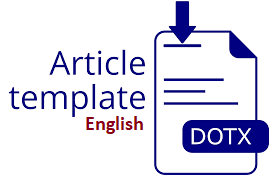Sistem Pendukung Keputusan Pemilihan Lingkungan Rumah Sehat dengan Metode Analytical Hierarcy Process (AHP) dan Simple Multi Attribute Rating Technique (SMART)
DOI:
https://doi.org/10.47065/bulletincsr.v1i2.93Keywords:
DSS; AHP; SMART; Healthy Home EnvironmentAbstract
Home environment is one of the most important buildings for humans, namely as a place of shelter and rest as well as a means of family development. Having a healthy home can foster a healthy life physically, mentally and socially, so that all members can work productively. people are competing to build houses with different advantages and disadvantages so that sometimes they do not meet health requirements. To improve a healthy home, in this case the responsibility of the head of the environment is also getting bigger. In order to motivate the head of the environment to always ensure that the home environment is always healthy in his area, a selection of a healthy home environment is made in a village. The problem that has occurred so far is that the decisions made by the village head towards a healthy home environment are still personal, not based on objectivity, in making decisions. This is a problem in choosing a healthy home environment. In order for the decision of the head of the village to be better, a decision support system (SPK) is needed. So in this study a Decision Support System (DSS) will be made using the AHP and SMART methods, which are expected to help consumers in determining the selection of a healthy home environment. precisely and quickly from several existing criteria and alternatives. Namely the weighting AHP method and the SMART ranking method.
Downloads
References
Z. Azhar and J. Hutahaean, “Penerapan Metode Analytical Hierarchy Process Dalam Pemilihan Tempat Cafe di Kisaran,” Build. Informatics, Technol. Sci., vol. 2, no. 2, 2020.
K. Safitri, F. T. Waruwu, and M. Mesran, “SISTEM PENDUKUNG KEPUTUSAN PEMILIHAN KARYAWAN BERPRESTASI DENGAN MENGGUNAKAN METODE ANALYTICAL HIEARARCHY PROCESS (Studi Kasus?: PT.Capella Dinamik Nusantara Takengon),” MEDIA Inform. BUDIDARMA, vol. 1, no. 1, Feb. 2017.
S. Kusumadewi, S. Hartati, A. Harjoko, and Retantyo Wardoyo, Fuzzy Multi-Attribute Decision Making (FUZZY MADM). 2006.
T. Limbong et al., Sistem Pendukung Keputusan: Metode & Implementasi. Medan: Yayasan Kita Menulis, 2020.
D. Nofriansyah and S. Defit, Multi Criteria Decision Making (MCDM) pada Sistem Pendukung Keputusan. 2018.
R. Umar, A. Fadlil, and Y. Yuminah, “Sistem Pendukung Keputusan dengan Metode AHP untuk Penilaian Kompetensi Soft Skill Karyawan,” Khazanah Inform. J. Ilmu Komput. dan Inform., 2018.
R. A. Suherdi, R. Taufiq, A. A. Permana, P. S. Informatika, F. Teknik, and U. M. Tangerang, “Penerapan Metode AHP dalam Sistem Pendukung Keputusan Kenaikan Pangkat Pegawai Di Badan Kepegawaian Dan Pengembagan Sumber Daya Manusia Kota Tangerang,” Sintak, 2018.
S. Buulolo, H. Gultom, and P. Damayanti, “Sistem Pendukung Keputusan Penentuan Prioritas Pengembangan Industri Kecil Dan Menengah Menggunakan Metode MOORA dan VIKOR,” in Seminar Nasional Sains & Teknologi Informasi (SENSASI), 2018, vol. 1, no. 1, pp. 409–415.
Risawandi and R. Rahim, “Study of the Simple Multi-Attribute Rating Technique For Decision Support,” IJSRST, vol. 2, no. 6, pp. 491–494, 2016.
T. Magrisa, K. D. K. Wardhani, and M. R. A. Saf, “Implementasi Metode SMART pada Sistem Pendukung Keputusan Pemilihan Kegiatan Ekstrakurikuler untuk Siswa SMA,” Inform. Mulawarman J. Ilm. Ilmu Komput., 2018.
Bila bermanfaat silahkan share artikel ini
Berikan Komentar Anda terhadap artikel Sistem Pendukung Keputusan Pemilihan Lingkungan Rumah Sehat dengan Metode Analytical Hierarcy Process (AHP) dan Simple Multi Attribute Rating Technique (SMART)
ARTICLE HISTORY
How to Cite
Issue
Section
Copyright (c) 2021 Muhammad Azroni Azroni, Berto Nadeak

This work is licensed under a Creative Commons Attribution 4.0 International License.
Authors who publish with this journal agree to the following terms:
- Authors retain copyright and grant the journal right of first publication with the work simultaneously licensed under Creative Commons Attribution 4.0 International License that allows others to share the work with an acknowledgment of the work's authorship and initial publication in this journal.
- Authors are able to enter into separate, additional contractual arrangements for the non-exclusive distribution of the journal's published version of the work (e.g., post it to an institutional repository or publish it in a book), with an acknowledgment of its initial publication in this journal.
- Authors are permitted and encouraged to post their work online (e.g., in institutional repositories or on their website) prior to and during the submission process, as it can lead to productive exchanges, as well as earlier and greater citation of published work (Refer to The Effect of Open Access).














